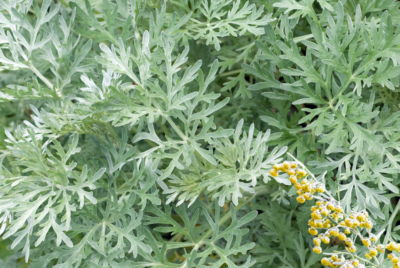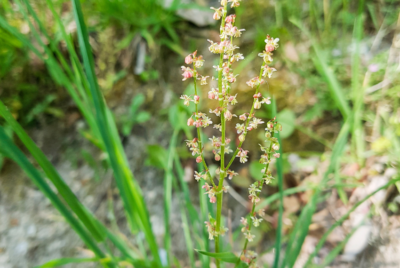Anise Hyssop Benefits!
Herb enthusiasts, brace yourselves for the wonders of Anise Hyssop! This unassuming herb is a powerhouse of health benefits and culinary delights waiting to be explored. From improving digestion and reducing inflammation to adding a unique licorice-mint flavor in your dishes, Anise Hyssop is truly a hidden gem in the world of herbs. Let’s look into the amazing properties of this herb and discover why it deserves a special place in your garden and kitchen.
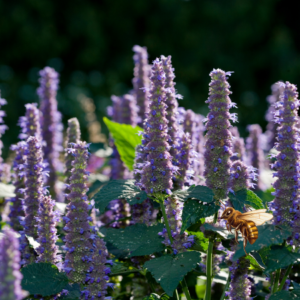
Key Takeaways:
- Anise Hyssop is a Secret Herb: Anise Hyssop is a hidden gem in the herb world, with fantastic benefits that many are unaware of.
- Health Benefits of Anise Hyssop: This herb is packed with health benefits, including anti-inflammatory and antimicrobial properties, making it great for overall well-being.
- Culinary Uses of Anise Hyssop: Anise Hyssop is not just nutritious but also adds a unique flavor to dishes, making it a versatile ingredient in cooking.
- Easy to Grow: Anise Hyssop is easy to grow in your garden, making it a convenient addition to your home for both culinary and health purposes.
- Overall Remarkable Herb: Anise Hyssop stands out as a remarkable herb with a range of benefits, making it a must-have in any herb garden.
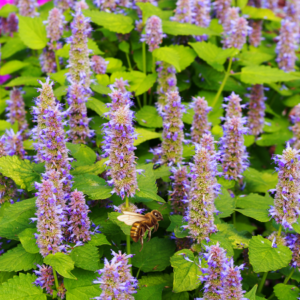
The History and Origins of Anise Hyssop
Before delving into the modern-day uses and benefits of Anise Hyssop, it’s vital to explore its rich history and origins. This aromatic herb, also known as Agastache Foeniculum, has a long history steeped in ancient traditions and has only recently begun to gain recognition for its incredible health and culinary benefits.
Ancient Uses and Traditions
Traditions surrounding Anise Hyssop date back centuries, with Native American tribes being among the first to recognize its medicinal properties. They often used the herb to treat various ailments, including coughs, fevers, and digestive issues. Additionally, Anise Hyssop was valued for its sweet, licorice-like flavor, making it a popular addition to teas, culinary dishes, and ceremonial rituals.
Modern Rediscovery and Cultivation
Any modern rediscovery of Anise Hyssop can be traced back to herbalists and natural health enthusiasts who have rekindled an interest in this versatile herb. In recent years, Anise Hyssop has gained popularity for its unique flavor profile and impressive array of health benefits. As a result, more farmers and gardeners have started cultivating this herb for both personal use and commercial purposes.
Uses: Anise Hyssop is revered for its anti-inflammatory and antioxidant properties, making it a valuable addition to natural remedies and skincare products. Additionally, its sweet, licorice-like flavor adds a unique twist to culinary creations, including teas, salads, desserts, and cocktails. Whether enjoyed for its health benefits or culinary appeal, Anise Hyssop continues to captivate individuals seeking a natural way to enhance their well-being.

Nutritional and Medicinal Properties
Vitamins, Minerals, and Antioxidants
If you’re looking for a herb packed with nutrients, anise hyssop is a fantastic choice. This herb is rich in vitamins such as vitamin A, vitamin C, and vitamin K, important for immunity, collagen production, and bone health.
Anti-Inflammatory and Antimicrobial Effects
Anise hyssop possesses impressive medicinal properties, including anti-inflammatory and antimicrobial effects. These effects can be beneficial for reducing inflammation in the body and fighting off harmful bacteria and viruses.
Medicinal: Anise hyssop has long been used in traditional medicine for its antimicrobial properties. Studies have shown that this herb may help combat various pathogens and promote overall wellness.
Digestive Health and Gut Balance
In addition to its nutritional benefits, anise hyssop positively impacts digestive health and gut balance. This herb can aid in digestion, reduce bloating, and support a healthy gut microbiome.
Vitamins: In addition to its vitamins and antioxidants, anise hyssop contains compounds that can help soothe the digestive system and improve overall gut function. Incorporating this herb into your diet can promote better digestion and gut health.
Culinary Delights and Uses
Once again, anise hyssop proves to be a versatile herb in the culinary world, adding its unique licorice-mint flavor to a variety of dishes.
Teas, Infusions, and Tinctures
To enhance your tea experience, add dried anise hyssop leaves to hot water for a soothing and flavorful infusion. You can also create tinctures by steeping the herb in alcohol for a more concentrated dosage of its medicinal properties.
Salads, Soups, and Sauces
Salads, soups, and sauces benefit from the addition of fresh anise hyssop leaves. The herb provides a refreshing and aromatic element that pairs well with a variety of ingredients, enhancing the overall flavor of the dish.
Culinary enthusiasts can experiment with incorporating anise hyssop in both traditional and innovative recipes to experience the herb’s versatility and delicious nuances.
Baked Goods and Desserts
Desserts are elevated with the addition of anise hyssop, whether it’s infused in cookies or cakes, adding a sweet and aromatic element to the treat.
For those with a sweet tooth, exploring baked goods and desserts with anise hyssop can lead to creative and delightful culinary experiences.
Health Benefits and Remedies
Respiratory Issues and Coughs
Your respiratory issues and coughs can find relief in anise hyssop. For centuries, people have used this herb to soothe the throat and relieve congestion, leveraging its natural properties to treat respiratory ailments. Anise hyssop is rich in important oils and compounds that have expectorant and anti-inflammatory effects, making it a great natural solution for respiratory discomfort.
Skin and Hair Care
Hair can benefit from anise hyssop’s properties as well. You can use anise hyssop extracts in hair care products to promote healthy hair growth and scalp health. Its antimicrobial and anti-inflammatory properties can also support the scalp’s overall health, potentially reducing issues like dandruff or itchiness.
Care for your skin with anise hyssop! This herb’s antioxidant properties can help protect the skin from environmental damage, while its anti-inflammatory effects can assist in soothing skin irritations and reducing redness. Including anise hyssop in your skincare routine can promote a healthy and radiant complexion.
Anxiety and Stress Relief
On anxiety and stress relief, anise hyssop can be a helpful natural remedy. Its calming effects on the nervous system can promote relaxation and reduce feelings of anxiety and stress. By incorporating anise hyssop into your wellness routine, you can experience a sense of tranquility and mindfulness.
For instance, enjoying a soothing cup of anise hyssop tea before bedtime can help calm the mind and improve sleep quality. The herb’s gentle sedative properties can aid in relaxation and promote a restful night’s sleep, making it a beneficial herb for those looking to unwind after a long day. With its natural benefits for both the body and mind, anise hyssop is a versatile herb worth exploring for holistic well-being.
Growing and Harvesting Anise Hyssop
Soil, Climate, and Light Requirements
To successfully grow anise hyssop, you’ll want to plant it in well-drained soil that is rich in organic matter. This herb thrives in full sun but can also tolerate partial shade. Anise hyssop grows best in temperate climates, enjoying moderate temperatures and regular watering to keep the soil consistently moist but not waterlogged. It’s necessary to provide this herb with adequate airflow to prevent issues like powdery mildew.
Planting, Pruning, and Pest Control
Anise hyssop is relatively easy to grow from seeds or transplants, and it’s best to sow the seeds directly in the garden after the last frost date. Regular pruning of anise hyssop encourages new growth and helps maintain a bushy, compact shape. Keep an eye out for common herb garden pests like aphids and spider mites, which may occasionally target anise hyssop plants.
For instance, you can introduce beneficial insects like ladybugs or use neem oil to control populations of harmful pests without resorting to harsh chemicals.
Drying and Preserving for Later Use
Lightly cut anise hyssop stems when the plant is in full bloom to harvest the leaves and flowers for drying. Hang these bundles in a warm, dark, and well-ventilated area until the leaves are crisp. Remove the dried leaves from the stems and store them in an airtight container away from direct sunlight to preserve their flavor and aroma for culinary or medicinal use.
Pruning anise hyssop plants regularly not only helps with harvesting but also stimulates new growth and improves the overall health of the herb. By removing spent blooms and leggy branches, you can ensure a continuous harvest of fresh leaves and flowers throughout the growing season.
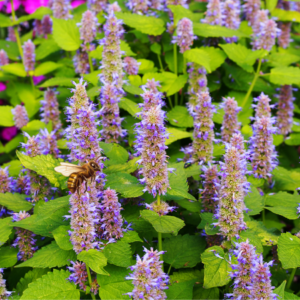
Precautions and Contraindications
Allergic Reactions and Interactions
Interactions with anise hyssop are generally uncommon, but some individuals may experience allergic reactions, particularly if they have a known allergy to plants in the mint family. If you have a history of allergies to herbs such as mint, basil, or sage, it is advisable to exercise caution when using anise hyssop. Common symptoms of an allergic reaction may include skin irritation, itching, swelling, or respiratory issues.
Pregnancy, Breastfeeding, and Children
Breastfeeding mothers should exercise caution when using anise hyssop, as limited research exists on its effects during breastfeeding. Consult with a healthcare provider before adding anise hyssop to your diet or routine to ensure the safety of both mother and baby.
This also applies to pregnant women and children. Although consuming anise hyssop in moderate amounts as a culinary herb is generally safe, pregnant women and young children should consult a healthcare provider before using it medicinally or in large quantities. Medication Interactions and Side Effects
Breastfeeding mothers should be aware that anise hyssop may interact with certain medications. It is important to consult with a healthcare provider before using anise hyssop if you are taking medications to avoid any potential interactions. Some medications that may interact with anise hyssop include blood thinners, diabetes medications, and sedatives.
Plus, anise hyssop may have mild side effects such as gastrointestinal discomfort or skin irritation in some individuals. Discontinue use and consult a healthcare provider if you experience any unusual symptoms after using anise hyssop.

Final Words
Hence, the article reveals the many health and culinary benefits of Anise Hyssop, showcasing its versatility and unique qualities. From its medicinal properties to its aromatic flavor, Anise Hyssop truly stands out as a secret herb worth incorporating into our lives. With its ability to boost immunity, aid digestion, and enhance the taste of dishes, this herb is a wonderful addition to any kitchen or herbal remedy collection.
FAQ
Q: What is Anise Hyssop?
A: Anise Hyssop, also known as Agastache foeniculum, is a wonder herb with a distinct anise flavor and incredible health benefits.
Q: What are the health benefits of Anise Hyssop?
A: Anise Hyssop is rich in antioxidants, has anti-inflammatory properties, aids in digestion, and supports respiratory health.
Q: How can Anise Hyssop be used in culinary applications?
A: Anise Hyssop can be used to add a unique flavor to teas, salads, desserts, and savory dishes like meats and vegetables.
Q: How can Anise Hyssop be incorporated into a daily routine for health benefits?
A: Anise Hyssop can be consumed as a tea, added to smoothies, used in salad dressings, or infused into honey for a daily health boost.
Q: Where can Anise Hyssop be grown?
A: Anise Hyssop thrives in well-drained soil and full sun, making it ideal for gardens, containers, or as part of an herb garden.
The Hidden Health Benefits of Tarragon
Coriander Digestive Aid and antiinflammation Superfood

